There's More to the Costumes of 'Bulbbul' Than Just Benarasi Sarees
Analysing the costume design of horror-mystery film, 'Bulbbul'.
Attention: Spoilers ahead!
Anvita Dutt’s debut film, Bulbbul that released almost 5 years ago is a horror-mystery movie that is set in 19th century Bengal Presidency. Bulbbul is a child bride who is being married to Indranil, a zamindar, when she is barely 5 years old. She is introduced to us in a bridal saree wrapped in the traditional Bengali style. All the costumes are designed to be appropriate for the setting where what hits the audience the most is the massive age gap between the bride and groom.
Dressed up in a bulky bridal attire, tiny Bulbbul looks like she is play-acting to be an adult, and that dichotomy between her age and her get-up and what her potential future is going to be is very stark.
Symbolism of feet play a big role in the film combined with its mythology surrounding how a chudail’s (witch) feet is always turned backwards, forever fooling humans of where she is coming from and where she’s going. The opening visuals of the film are Bulbbul’s alta-smeared feet as she’s swinging from tree branches. When her pishima (paternal aunt) is fixing her up, she makes Bulbbul wear a toe ring, saying that that it’ll keep her passions in control.
Bulbbul becomes friends with Satya, Indranil’s younger brother, who is closer to her age and both of them grow up telling each other stories of the chudail before he is sent to London to pursue further studies.
Twenty years later, when Satya returns to his village, he is dressed like a traditional Englishman wearing a three-piece suit, cut sharply to fit his physique.
But, in the morning, when he goes to meet Bulbbul, he is dressed in the Indian-western combo that now defines him. A coat, over a waistcost and a Nehru collar kurta with traditional white dhoti.
Bulbbul greets him in classic Thakurian drag. Without any context to their history, as the lady of the house, she certainly looks the part - very intimidating and strong, but also moderately welcoming. Even her blouse is adorned with flowers, like she’s inviting him into her house, as if he is an outsider.
A flashback to Bulbbul and Satya’s childhood shows both of them running around trees and spooking each other with tales of the chudail. While Satya is seen wearing white kurta-pyjama, Bulbbul is wearing bulky sarees, all in pastel shades, and minimal jewelry, highlighting her young age. Despite being the badi bahu of the house, she is after all, still a little girl.
In the present day, though, seeing Bulbbul dressed in such a mature and powerful way is quite a visual shock, making one wonder what her journey was like, what made her transform from that to this?
Meanwhile, when Satya and Bulbbul go to the outhouse to meet Binodini, Satya’s sister-in-law and Indranil’s twin brother, Mahendra’s widow, she is dressed in all white with her hair shaved off - a traditional get-up for widows of that time.
When we meet Dr. Sudip, who regularly checks up on Bulbbul and her feet that are injured for some mysterious reason, he is dressed as a commoner. But seeing the comradery between Sudip and Bulbbul irks Satya, which also influences the reasons why he comes to suspect him to be behind the mysterious murders taking place in the village.
One detail to note here is the embroidery on Bulbbul’s heeled black boots that at once look stylish and authoritative, and also subtly brings attention to her feet.
Much of the inspiration for the film has been taken from the women and relationships of the Jorasanko Thakur Bari household - Rabindranath Tagore’s ancestral home, and also from his own writings. From narrative parallels to Tagore’s novel, ‘Chokher Bali’ and novella ‘Noshtoneer’ to his real-life deep and emotionally intimate relationship with his sister-in-law Kadambari Devi, there are a lot of plot points that mirror in Bulbbul.
In a flashback, we see how before Satya left for London, the family dynamics were completely different. Even though, Bulbbul is the bari bahu, Binodini acts as the lady of the house - possibly because she’s older to Bulbbul and also because of her domineering nature. She is dressed as a proper thakurian with a shiny Benarasi saree and decked up in gold jewelry.
On the other hand, we see how even after growing up to be a young woman, Bulbbul still dresses up as her former little girl self - in pastel shades, with girlish frilled blouses and minimal jewelry. This indicates to her lower rank in the house, but also her meek attitude towards life. It also showcases her innocence and a lack of self-confidence.
I mentioned parallels to Rabindranath Tagore with this story, but I’d also like to bring attention to how Satya looks similar to fictional detective, Byomkesh Bakshi. Granted, there are only so many ways one can fashion a 19th century Bengali detective, but considering that Satya in the film tries to solve the mystery behind the village murders, it was impossible for me to ignore the similarity, or rather a nod, to the popular detective and how Satya is styled like him.
I’m fast forwarding a bit - in a series of flashbacks, we learn about how Indranil decides to send Satya to London because of his jealousy with Bulbbul and Satya’s friendship. Bulbbul tearfully asks Satya not to go, but he does anyway. When Satya is gone, Indranil brutally beats Bulbbul (her legs specifically) and then Mahendra, who happens to be developmentally challenged, rapes her. That is the night Bulbbul transforms into the chudail who murders all the men in the village that have been abusing women.
Binodini and Dr. Sudip are only ones who really know what she has been through. So, when we see Sudip and Bulbbul have a conversation in the verandah where he admits to having feelings for her, but choosing to not act on them because he considers her (spiritually/emotionally) way above her, Bulbbul gives him an ambiguous look that can be interpreted in many ways. Maybe there’s longing on her part for Sudip and her wishing he’d gather courage and go for her, or maybe that look was a simple grateful look of him understanding her.
Here, her blouse acts as a standout piece of clothing to me. The gold motifs on her navy blue blouse almost resemble bullet wounds. The story of her past, her present and her future, the story of her strength, they all emerge from her past wounds that she keeps hidden from the world, donning a cloak of traditionality (here, the saree) to present a strong front.
Meanwhile, Satya has narrowed in on Dr. Sudip as his main suspect behind the murders and he won’t stop until he’s caught. He takes Sudip along with him to the forest, wearing a rich velvet red vest over an open-collar shirt. He’s out for blood.
But instead, Dr. Sudip encounters the chudail - Bulbbul - in her red two-piece ensemble that resembles that of Goddess Kali with whom, movies makes a lot of visual parallels. In her Kali avatar, with her feet turned backwards, Bulbbul - who Satya shoots down - burns the whole forest down.
But obviously, her spirit stays alive, that goes on to haunt Indranil and make him pay for his crimes.




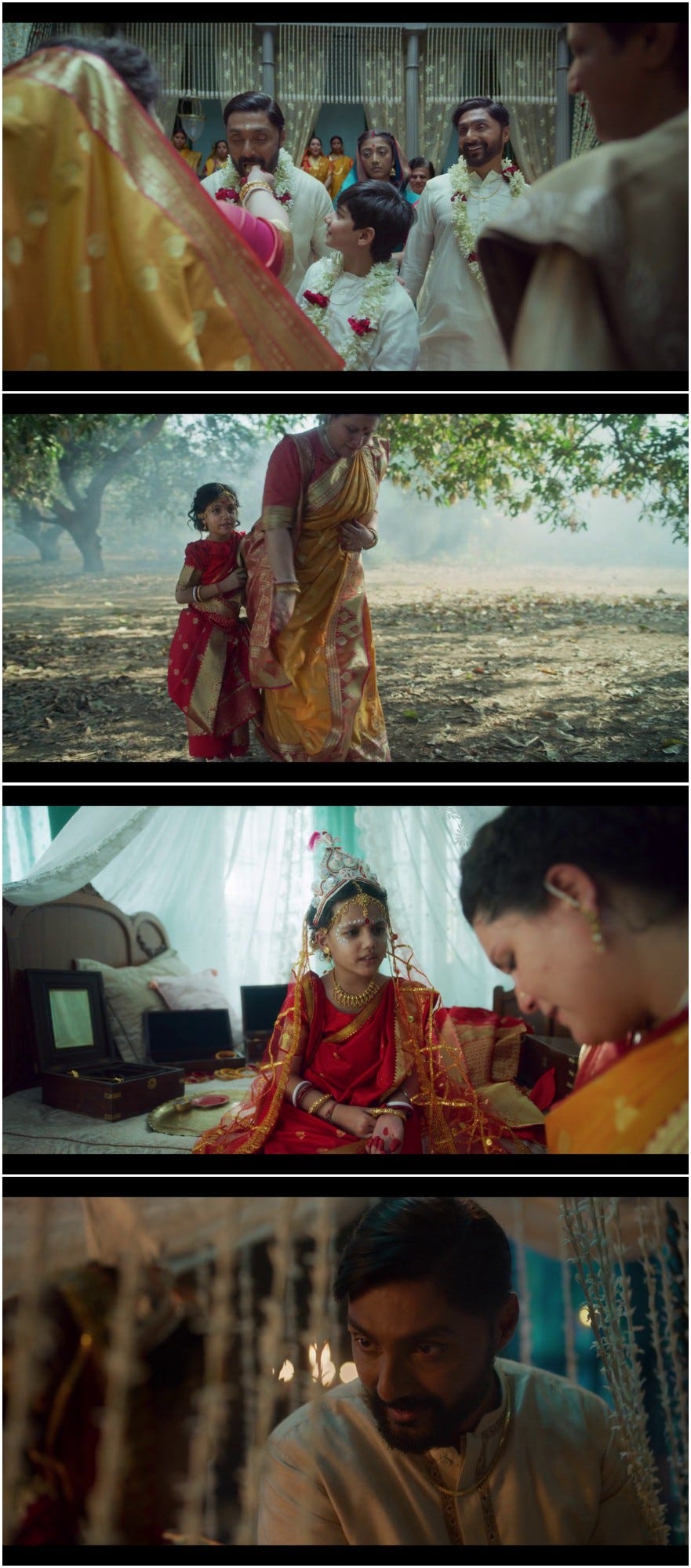

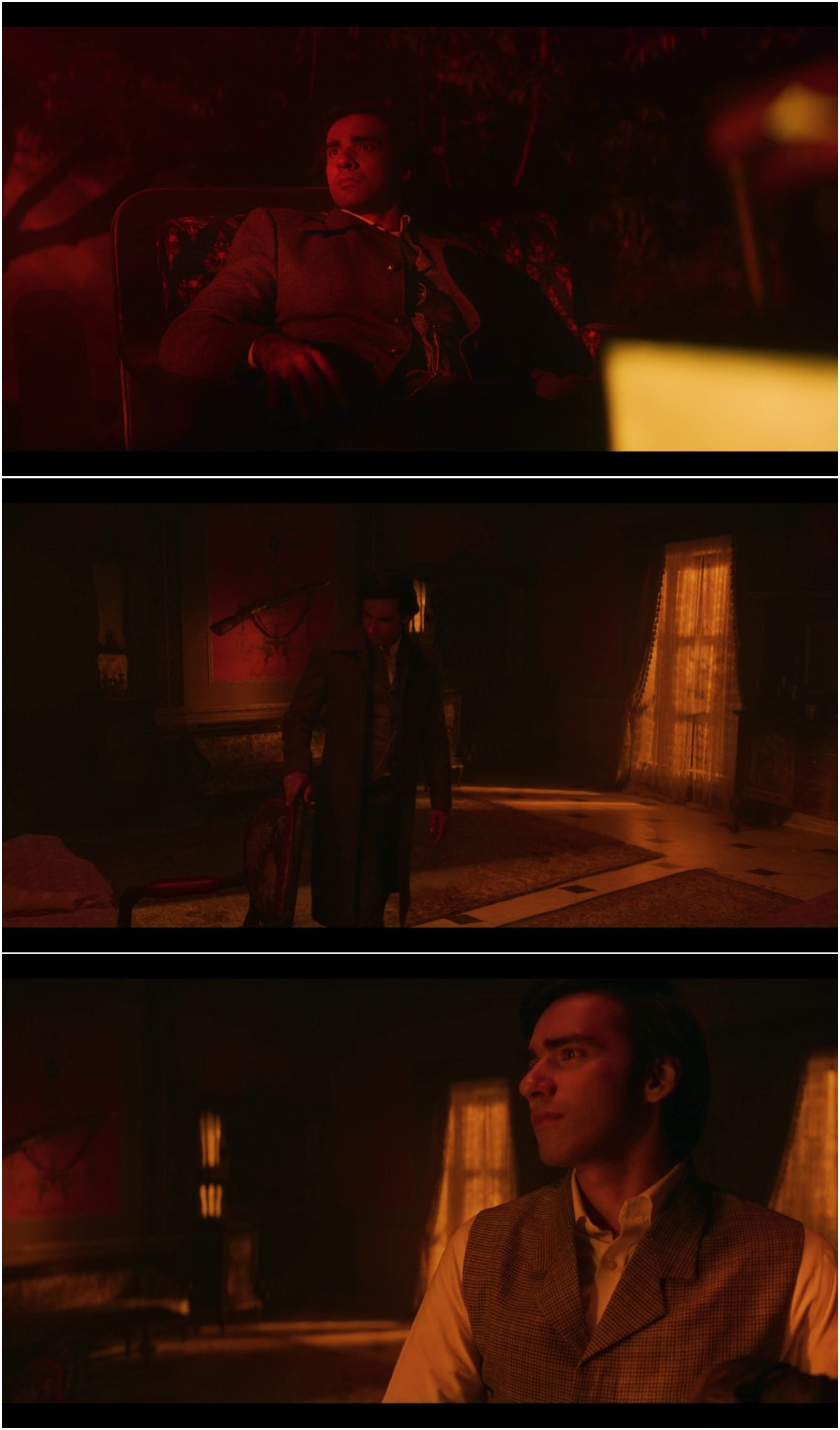
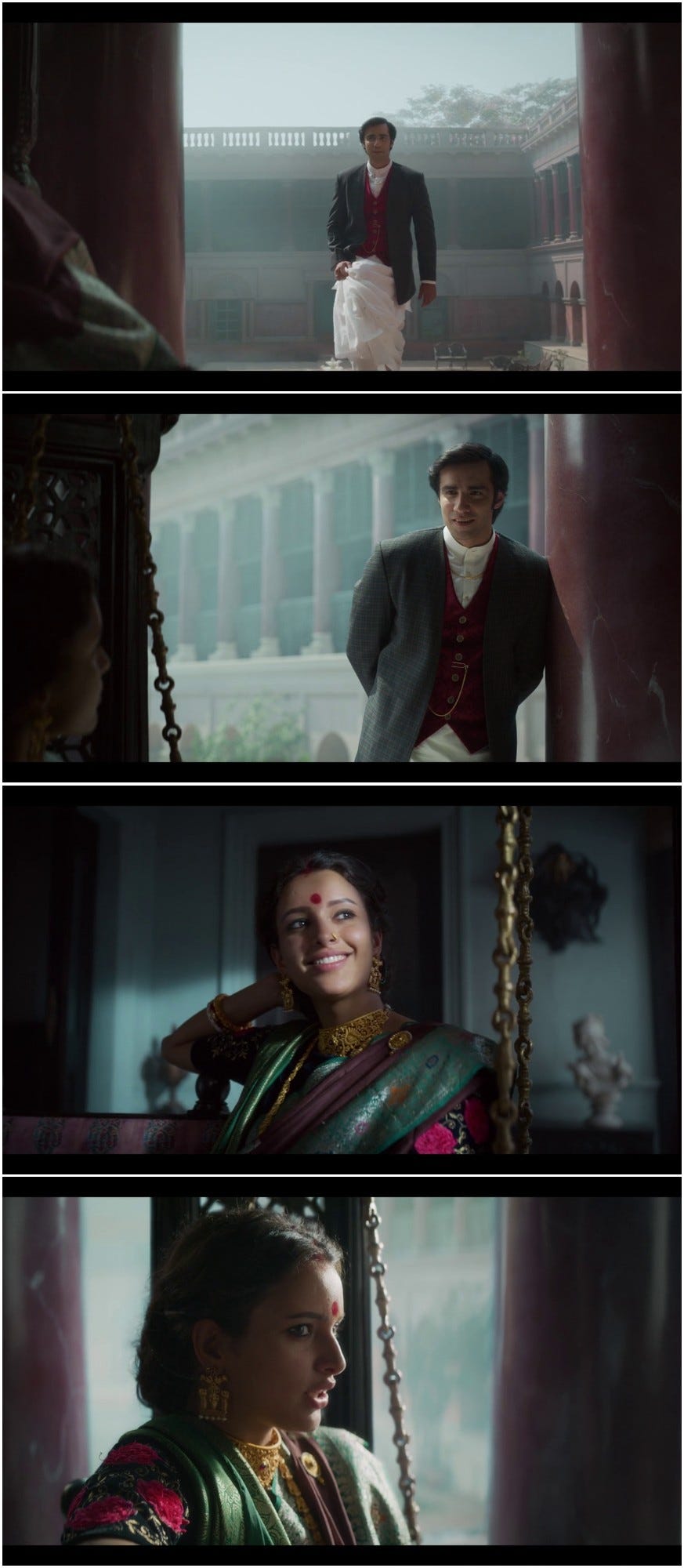
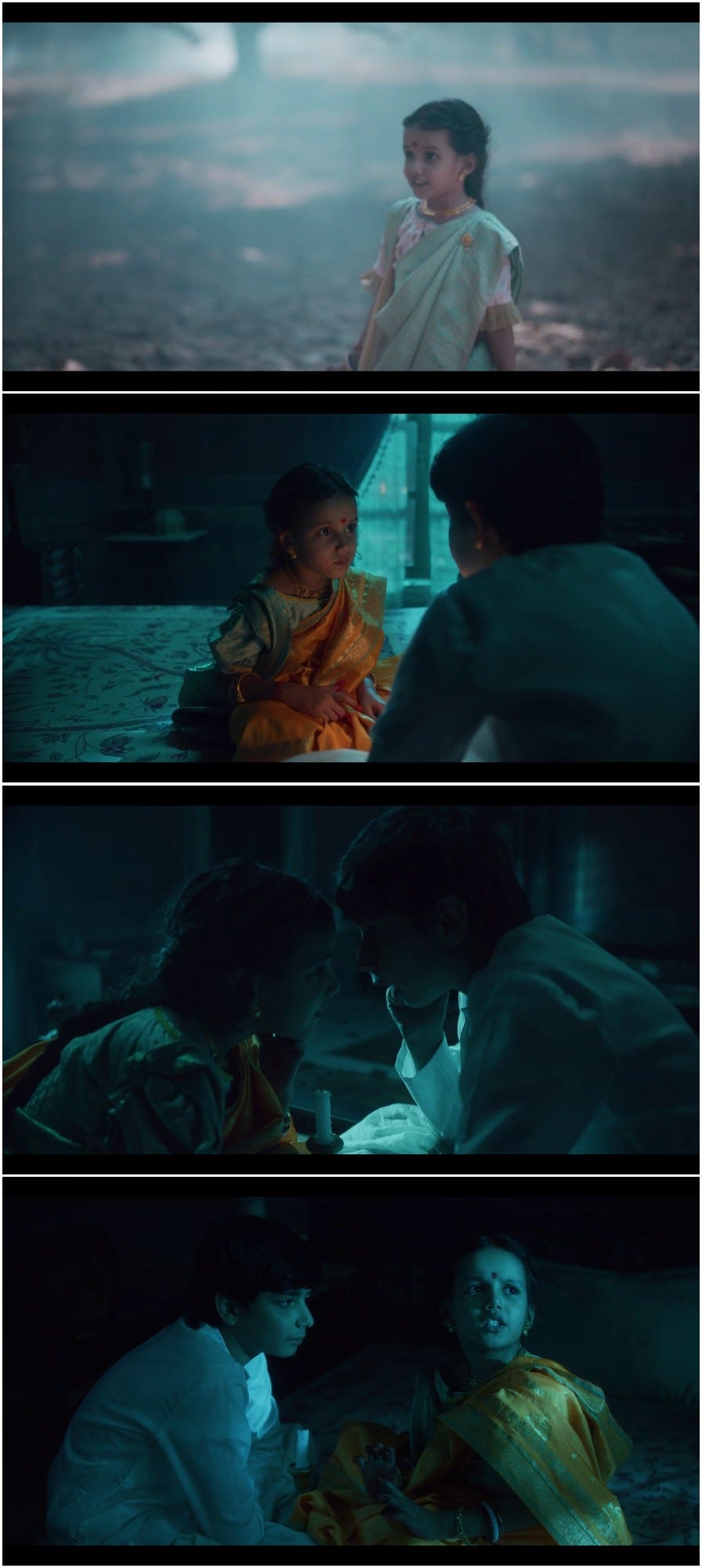
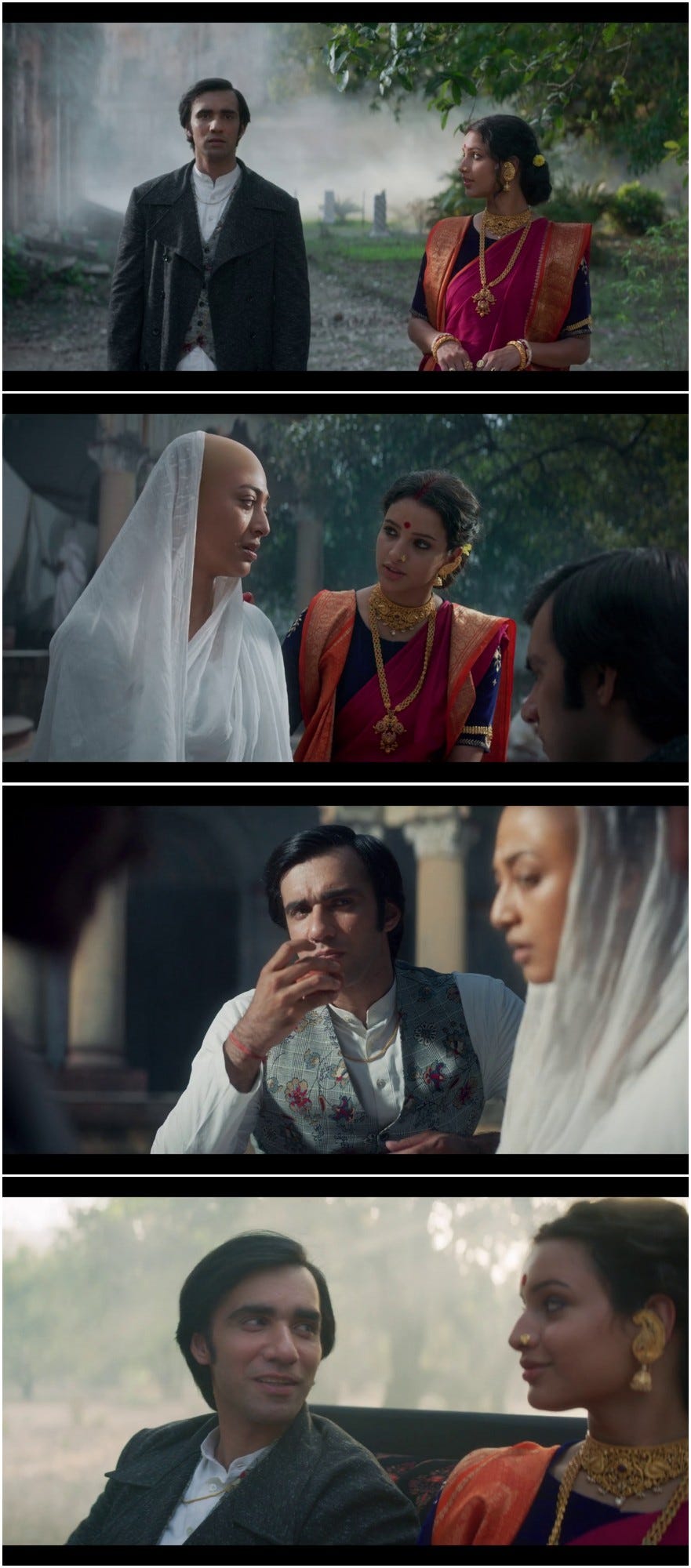
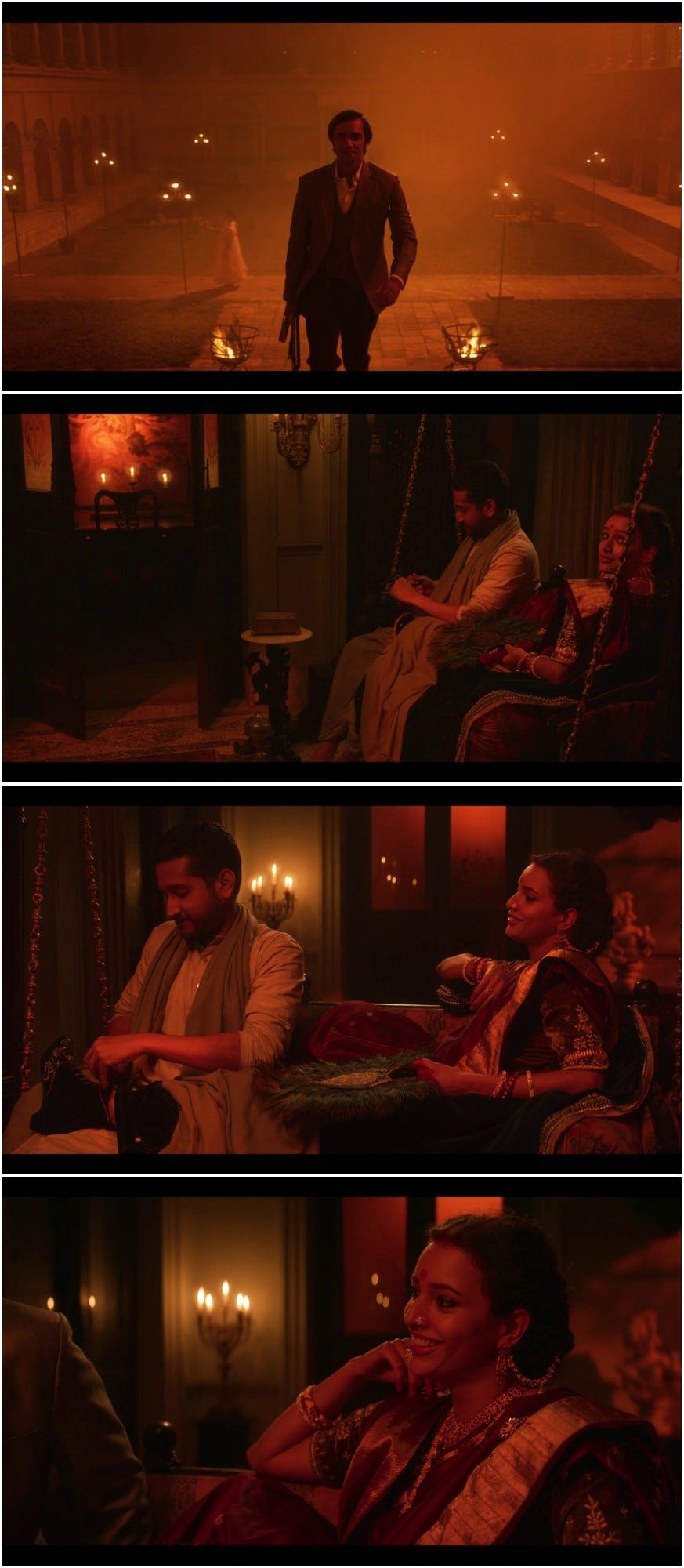
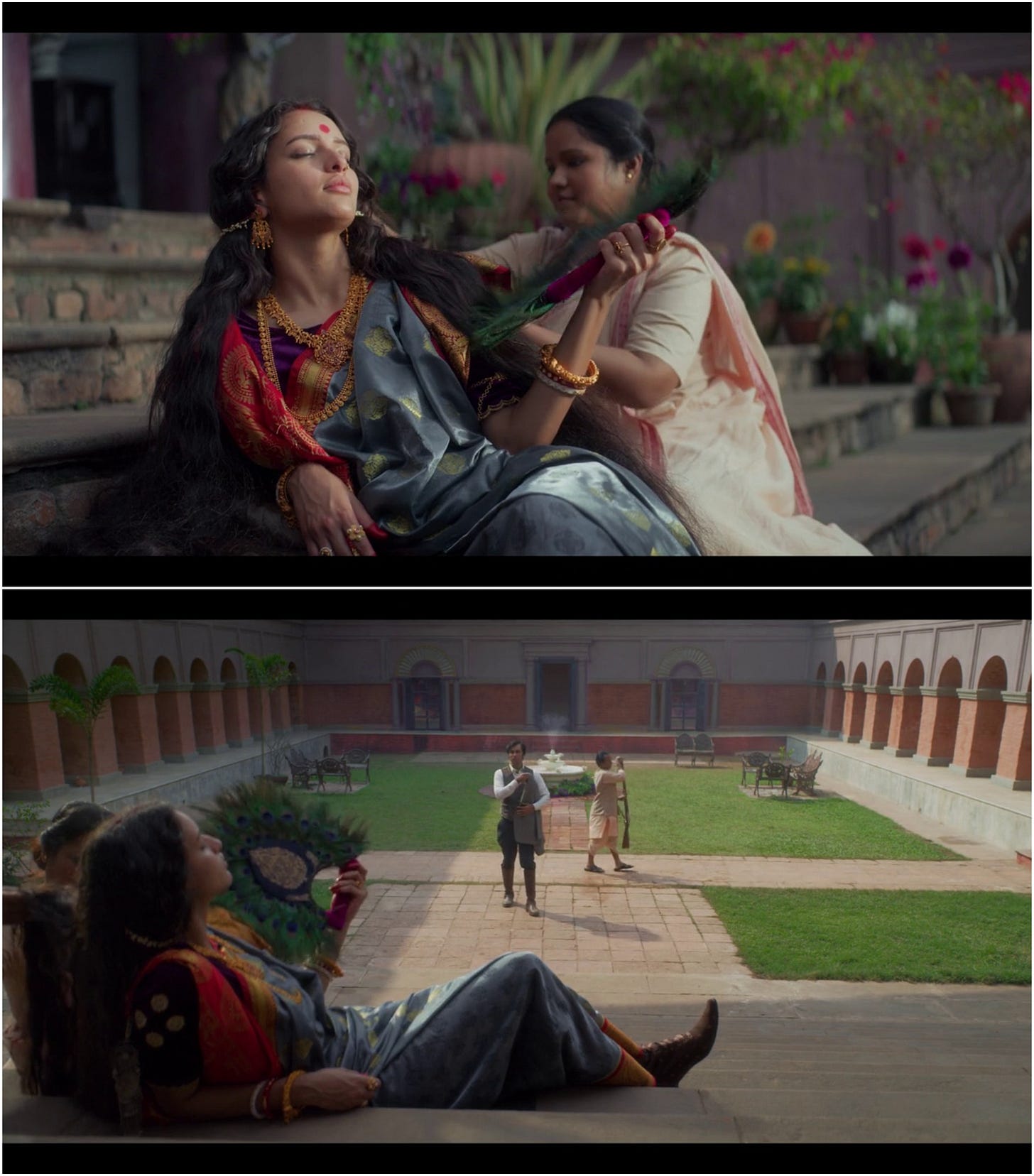



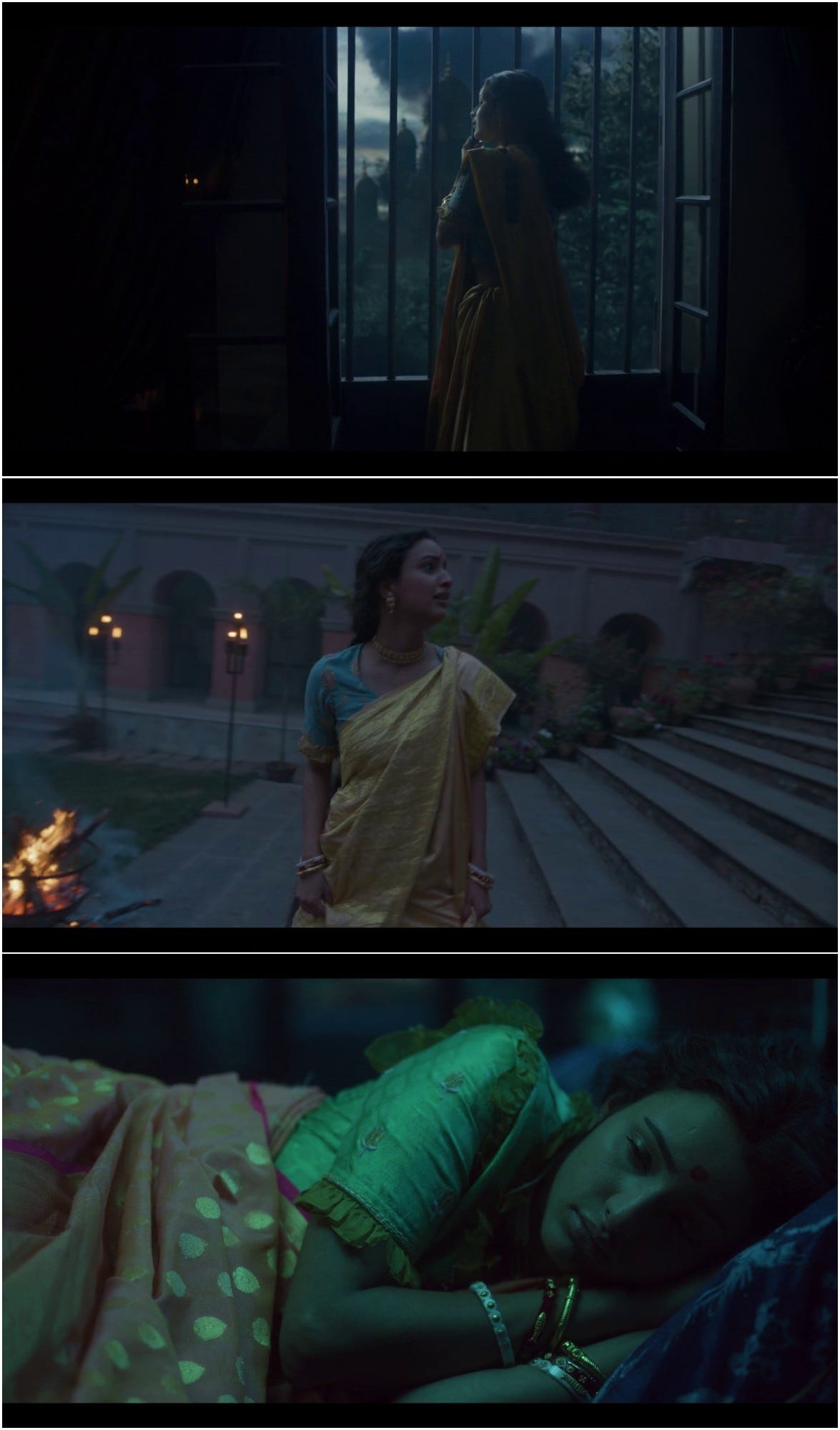
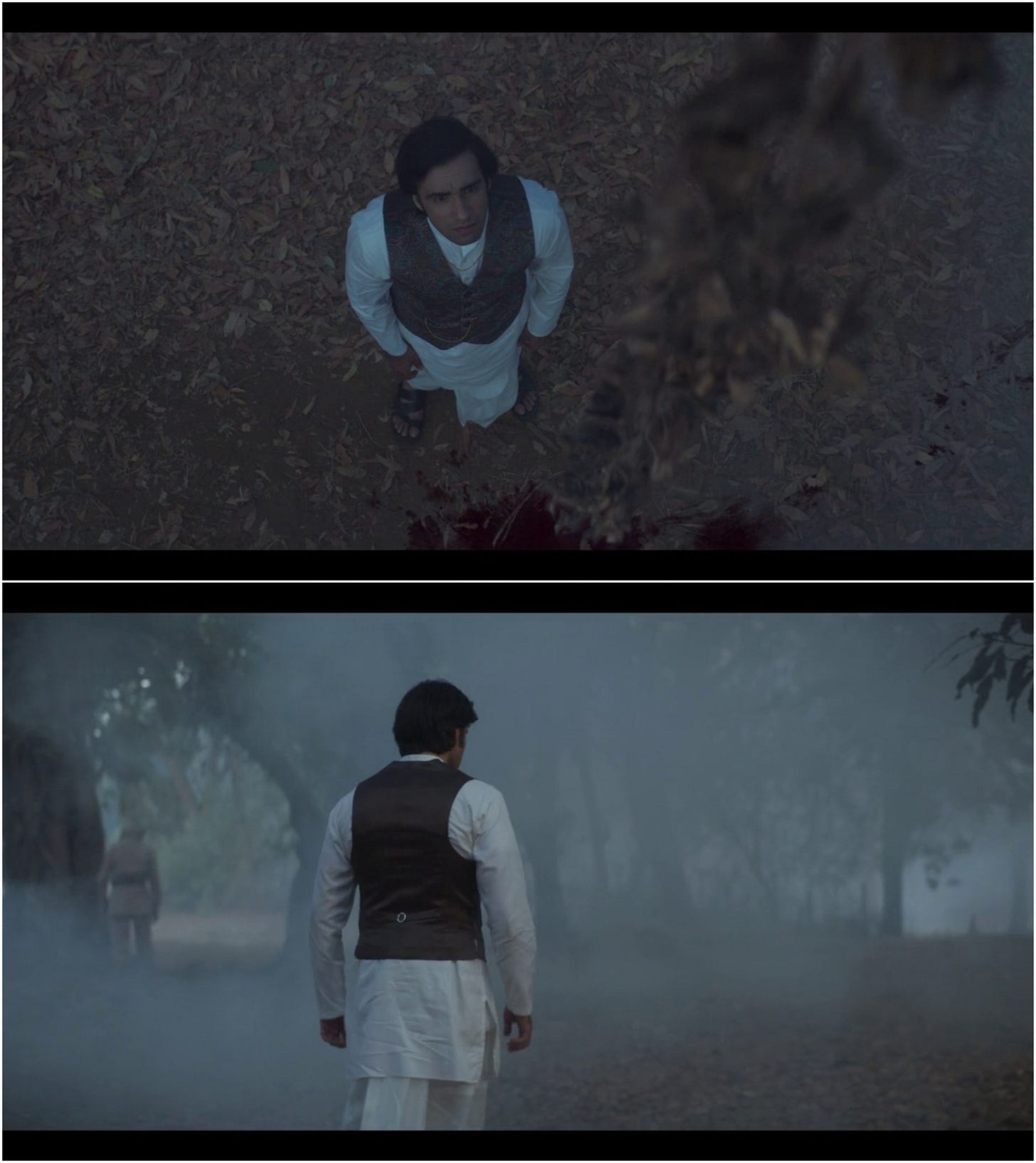

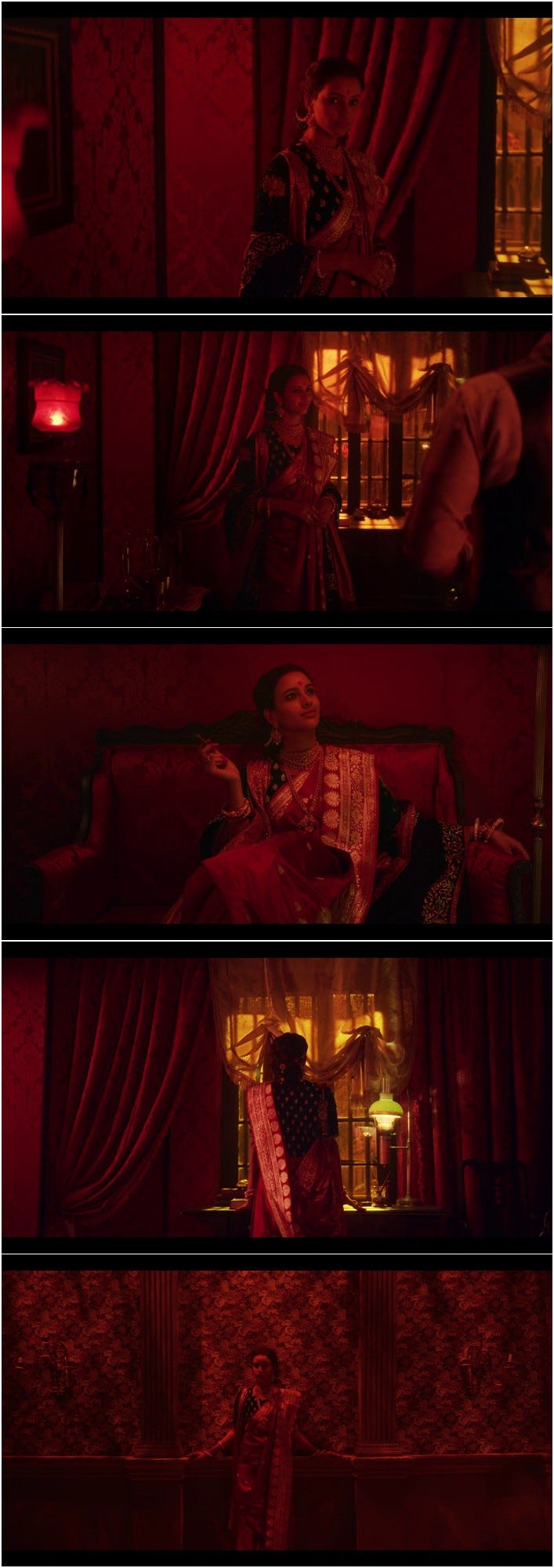
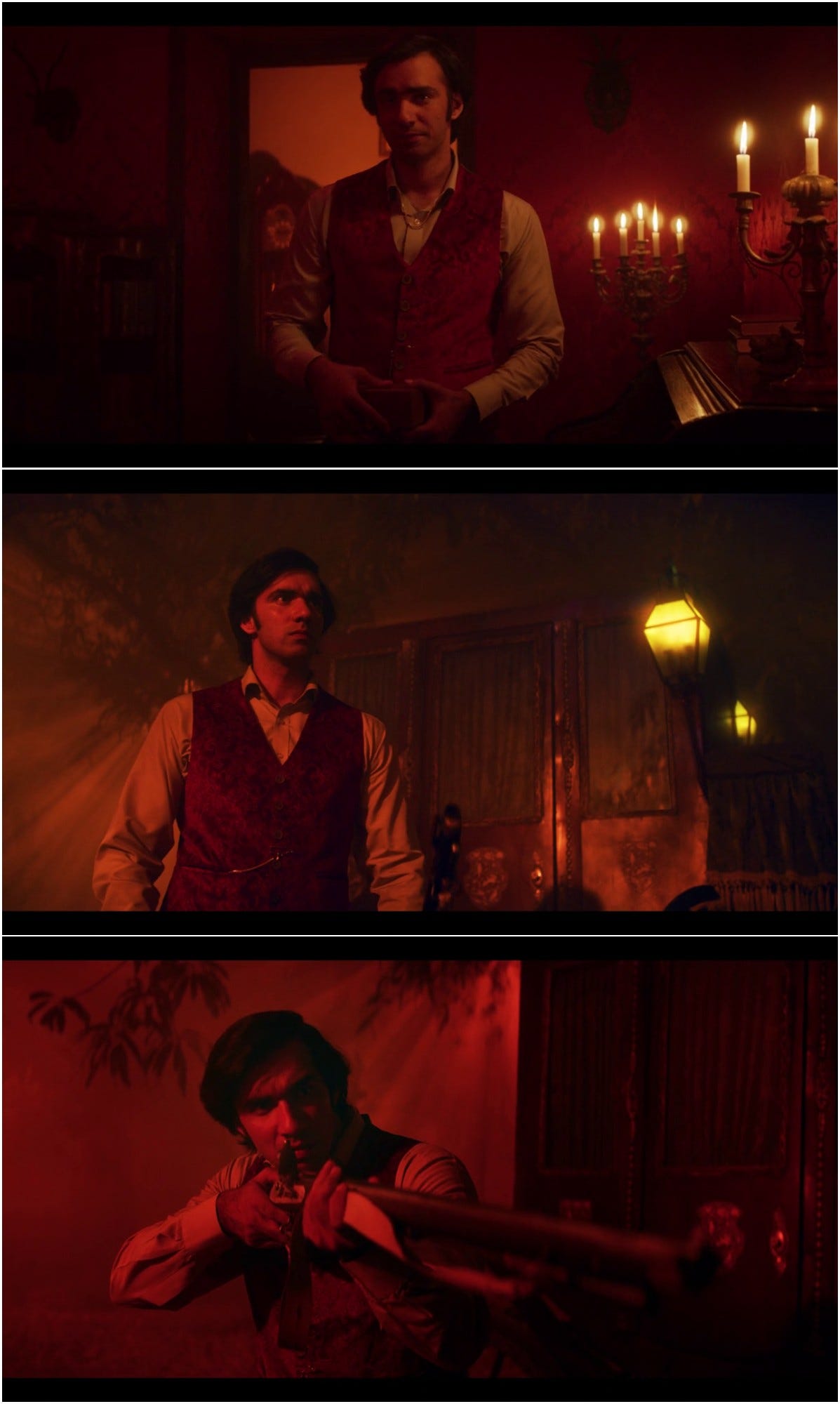
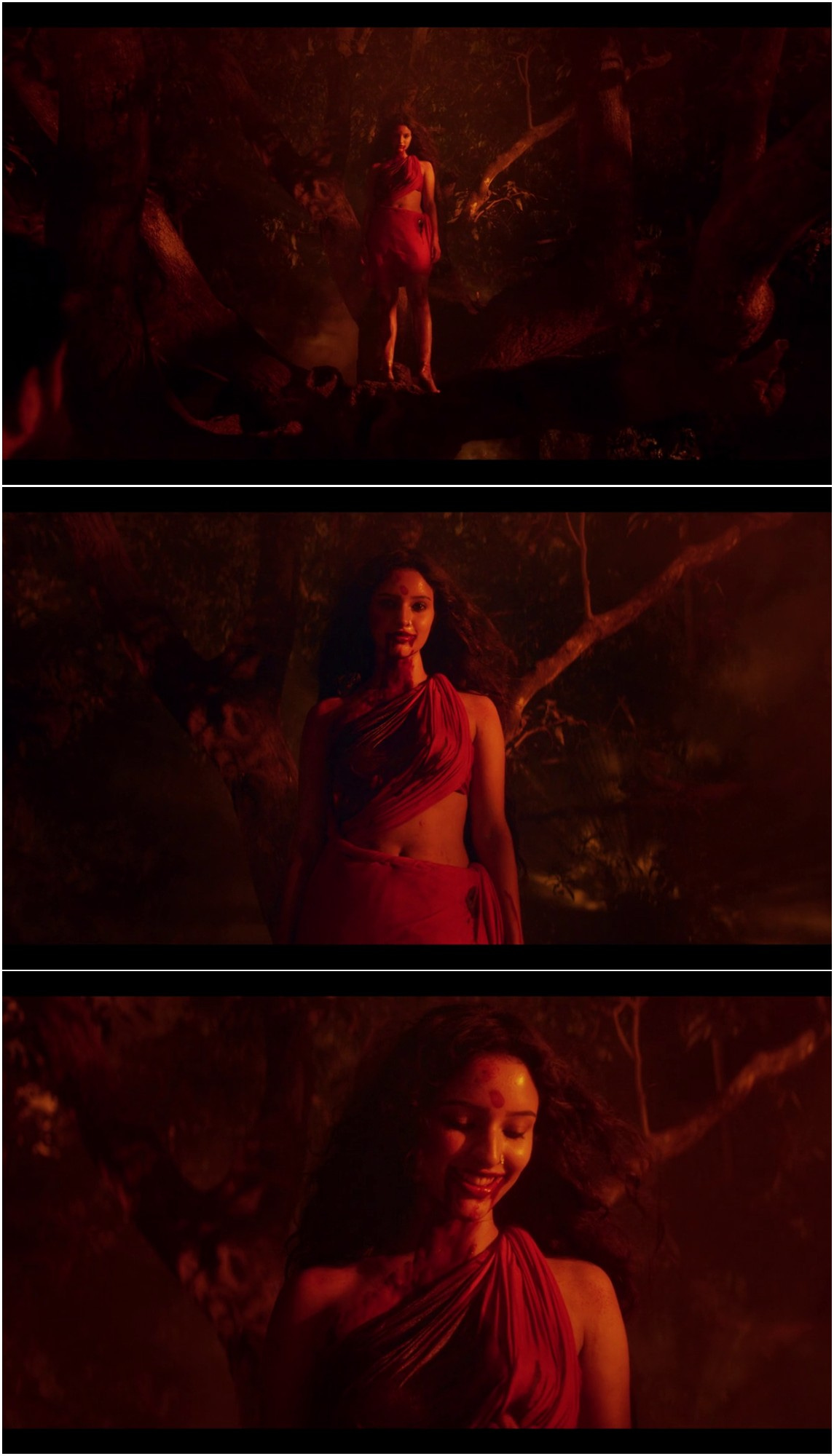

Love your work 💖